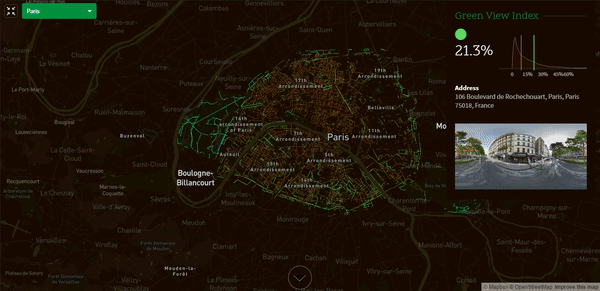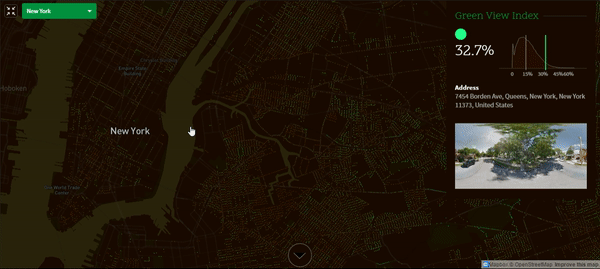This Refreshing Data Visualisation Reveals Where Your City’s Trees Are
Trees help keep cities cool and remove air pollution, but how much of your city is actually covered by them?
A new interactive website lets you explore and compare trees in cities around the world. Launched last month, the tool crunches Google Street View data to visualise the aboveground portion of trees and other vegetation in a city.
The site’s interactive interface immediately shows which areas of a city are green and which are not. It also lets you zoom on the map in to explore the exact amount of green coverage near a particular street corner, neighbourhood or road.

GIF: Daily Planet
Comparing Cities
Using the tool’s Green View Index, which is calculated by analysing Google Street View photos, you can compare cities. You can also click on the map to access the panorama photos and see the trees, or lack thereof, for yourself.
A quick browse around the site reveals that Amsterdam is not as green as Vancouver, for example. The Dutch capital has been given an average index of close to 21 per cent compared to the Canadian city’s almost 26 per cent.
Called Treepedia, the tool currently lets you explore ten world cities, but the project will soon expand to other cities according to the researchers behind the website.
Urban Life
“As many cities experience warming temperatures, increased storm frequency, and continued air pollution, the well-being of our urban trees has never been more important.” said Carlo Ratti of MIT’s Senseable City Lab, the multidisciplinary research group that created the tool.
The World Health Organisation (WHO) estimates that air pollution cost Europeans $1.6 trillion – and caused some 600.0000 deaths – in 2010 alone. Treepedia’s website points out that although trees help “mitigate extreme temperatures, provide a natural respite from traffic, noise, and congestion” and improve “quality of life,” many city dwellers are unaware of the state of their city’s tree cover.

GIF: Daily Planet
Treepedia’s website points out that although trees help “mitigate extreme temperatures, provide a natural respite from traffic, noise, and congestion” and improve “quality of life,” many city dwellers are unaware of the state of their city’s tree cover.
The researchers say the goal behind the tool is to make this type of data more easily accessible to for scientists and urbanites. One of the next steps for the website is to ask city citizens to help tag and track trees on an open-source map, and to push their city administrations for more trees in areas with insufficient green cover.
Tireless Innovation
Cities are responsible for the bulk of the world’s greenhouse gas emissions, and some are already suffering from climate change impacts such as droughts and floods.
“The future of cities cannot be one of unsustainable expansion; it should rather be one of tireless innovation,” said Alice Charles of the World Economic Forum, which is supporting the MIT project.
With some 75 per cent of the world population expected to live in cities by 2050, governments, businesses and innovators are racing against the clock to make the world’s cities are ready for it. Forbes magazine recently highlighted how a German start-up has developed a new modular method to incorporate plants in a city landscape, for example.
The start-up Green City Solutions is supported by Climate-KIC, the European Union’s climate innovation partnership and combines space-saving and lightweight technology with vegetation. A digital monitoring and control system optimises the climatic air effect and plant care.
Find out Climate-KIC’s Low Carbon City Lab supports cities in Europe and around the world.

